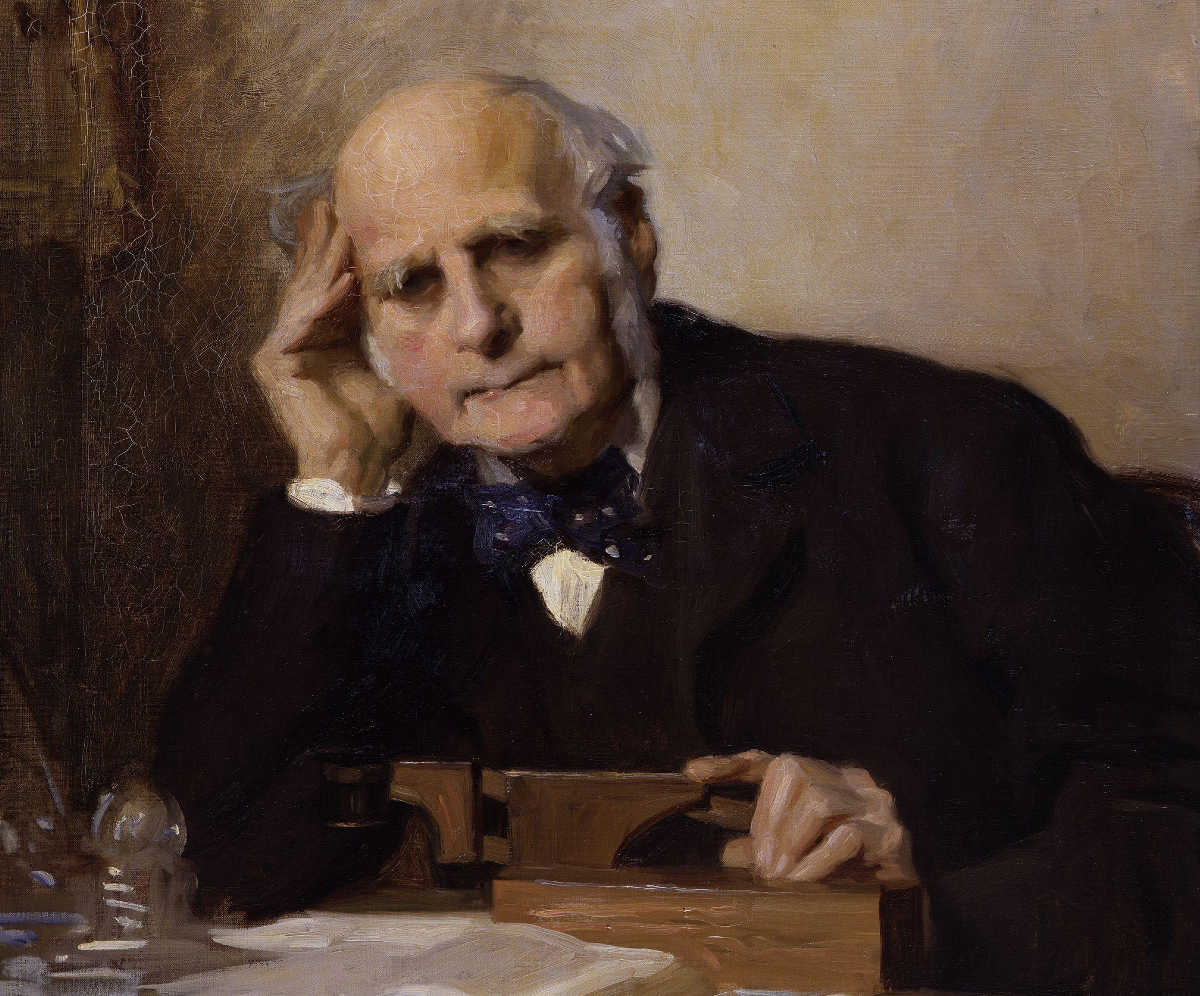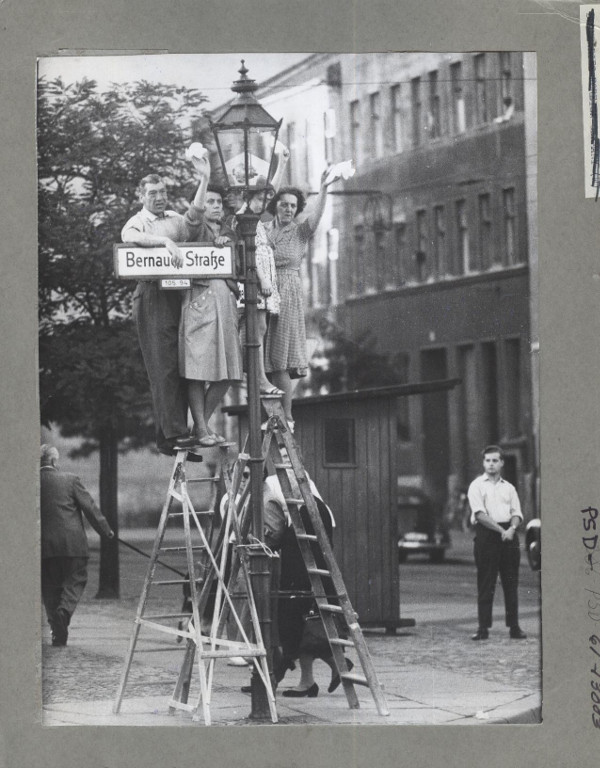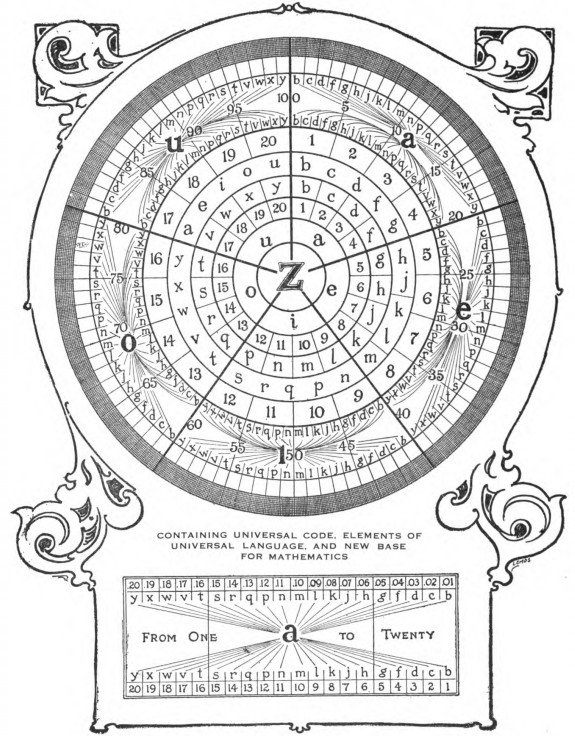Given 52 integers, prove that it’s always possible to find some two of them whose sum or difference is evenly divisible by 100.
A Nose for Numbers

In 1894 Francis Galton experimented with conducting addition and subtraction by smell. He designed an apparatus that would produce whiffs of scented air and then memorized their combinations: “I taught myself to associate two whiffs of peppermint with one whiff of camphor; three of peppermint with one of carbolic acid, and so on.”
After practicing sums using the scents themselves, he moved on to doing them entirely in his imagination. “There was not the slightest difficulty in banishing all visual and auditory images from the mind, leaving nothing in the consciousness besides real or imaginary scents. In this way, without, it is true, becoming very apt at the process, I convinced myself of the possibility of doing sums in simple addition with considerable speed and accuracy solely by means of imaginary scents.”
He had similar success with subtraction, but didn’t try multiplication. And some further experiments seemed to show that “arithmetic by taste was as feasible as arithmetic by smell.”
(Francis Galton, “Arithmetic by Smell,” Psychological Review 1:1 [January 1894], 61-62.)
Near and Far

This just turned up as today’s featured document at the U.S. National Archives:
“Citizens of West Berlin Stand on Ladders to Greet Friends and Loved Ones on the Eastern Side of the Berlin Wall,” Sept. 16, 1961.
Podcast Episode 265: The Great Hedge of India

In the 19th century, an enormous hedge ran for more than a thousand miles across India, installed by the British to enforce a tax on salt. Though it took a Herculean effort to build, today it’s been almost completely forgotten. In this week’s episode of the Futility Closet podcast we’ll describe this strange project and reflect on its disappearance from history.
We’ll also exonerate a rooster and puzzle over a racing murderer.
Once and For All
Who wins a fight between a water cannon and a flamethrower?
A Global Code

With The Scientific Dial Primer (1912), Andrew Hallner aimed to make a universal phrasebook for all mankind. The dial contains five rings, and code words can be constructed by working from the center outward. For example, the first ring contains 5 vowels and the second 20 consonants; these can be combined to create 100 two-letter words that are used to represent the numbers 1-100 (ti, for example, means 56). Adding the third ring yields 2,525 one-syllable three-letter words, which are given specific meanings (jad refers to a butcher knife, dag to cement in sacks). With some refinements, the system can encode a message as specific as this:
We shall discard all Sunday newspapers, for these are the chief sinners and temptors, being themselves Sabbath-breakers, and maintain but one or two dailies. But these you need not look at, for I will read to you such articles and extracts as relate to Congress and general intelligence, profitable and elevating to know about.
This assertion would be represented everywhere by the same code, qema; speakers of different languages would only need local phrasebooks that explain this meaning to each in his own tongue.
“By writing or pointing to the Scientific Dial Code-Word, therefore, you can communicate intelligently with any nationality on our globe,” Hallner wrote. “You can travel in or through any country, find the way, buy tickets, give orders in hotels and restaurants, attend to toilet, address the barber, arrange your baths, and do anything and everything necessary in travel; and in ordering goods, in exchanging money, and in carrying on general business transactions. And all this knowledge may be acquired in a week! For to acquire and make use of this knowledge is only to understand the Scientific Dial and the principles involved.”
Anatomy

The transept of the Cathedral of Milan features a 1562 statue of the flayed Christian martyr Saint Bartholomew wearing his own skin as a robe.
It’s inscribed I was made not by Praxiteles but by Marco d’Agrate.
Math Notes
If a tetrahedron is constructed on a base with side lengths 125, 244, 267, then the remaining sides can take the shapes of three right triangles: (44, 240, 244), (44, 117, 125), (117, 240, 267).
And now the sum of the squares of the lengths of each pair of opposite sides in the tetrahedron is the same:
1172 + 2442 = 1252 + 2402 = 442 + 2672 = 73225
(From Edward Barbeau, Power Play, 1997.)
Dash It All
In “Freaks of the Telegraph,” an 1881 article in Blackwood’s Magazine, Charles Lewes points out that in Morse code the words BAD (-… .- -..) and DEAD (-.. . .- -..) differ only by the space between the D and E in DEAD.
This could result in a sentence such as MOTHER WAS BAD BUT NOW RECOVERED being interpreted strangely as MOTHER WAS DEAD BUT NOW RECOVERED. “Of course, in this case a telegraph operator (short of believing in zombies) would likely notice something was amiss and ask for confirmation of the message — or else attempt to correct it himself,” writes N. Katherine Hayles in How We Think.
But correcting it himself could lead to further misunderstandings. Lewes gives one example: “A lady, some short time since, telegraphed, ‘Send them both thanks,’ by which she meant, ‘Thank you; send them both’ — (the ‘both’ referred to two servants). The telegram reached its destination as ‘Send them both back,’ thus making sense as the official mind would understand it, but a complete perversion of the meaning of the writer.”
Public Health
According to local folklore, the village of Nigg, Scotland, vanquished cholera in a singularly direct way:
In a central part of the churchyard of Nigg there is a rude undressed stone, near which the sexton never ventures to open a grave. A wild apocryphal tradition connects the erection of this stone with the times of the quarantine fleet. The plague, as the story goes, was brought to the place by one of the vessels, and was slowly flying along the ground, disengaged from every vehicle of infection, in the shape of a little yellow cloud. The whole country was alarmed, and groups of people were to be seen on every eminence, watching with anxious horror the progress of the little cloud. They were relieved, however, from their fears and the plague by an ingenious man of Nigg, who, having provided himself with an immense bag of linen, fashioned somewhat in the manner of a fowler’s net, cautiously approached the yellow cloud, and, with a skill which could have owed nothing to previous practice, succeeded in enclosing the whole of it in the bag. He then secured it by wrapping it up carefully, fold after fold, and fastening it down with pin after pin; and as the linen was gradually changing, as if under the hands of the dyer, from white to yellow, he consigned it to the churchyard, where it has slept ever since.
From Hugh Miller, Scenes and Legends of the North of Scotland, 1835.
